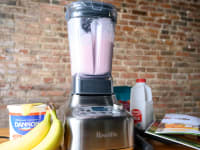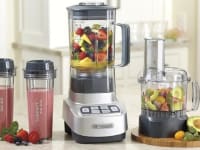NutriBullet now makes an affordable juicer—but does it work?
We tried the NutriBullet Juicer Pro to find out.
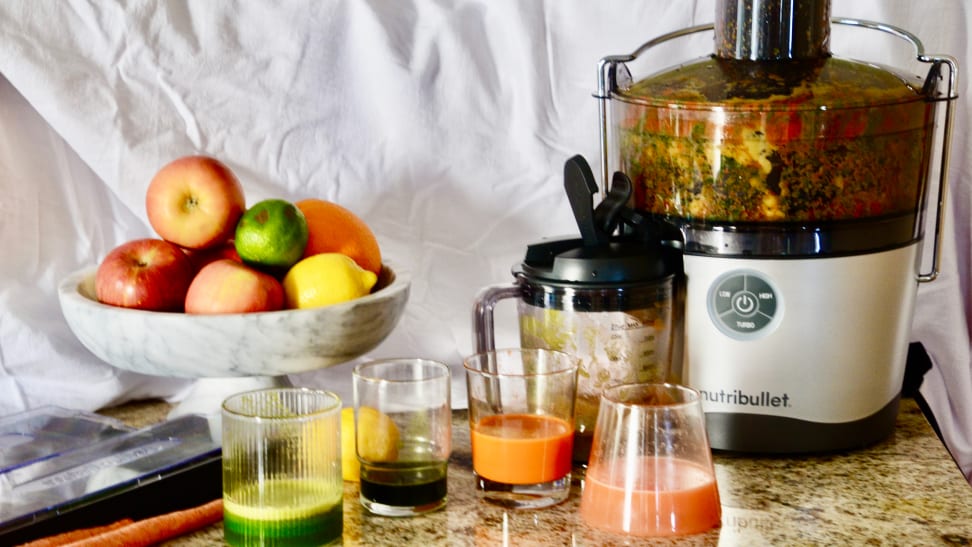 Credit:
Reviewed / Valerie Li Stack
Credit:
Reviewed / Valerie Li Stack
Products are chosen independently by our editors. Purchases made through our links may earn us a commission.
As we are spending more time at home, we’ve picked up new hobbies, tried making new dishes, and are (probably) ready to take on more challenging tasks, like juicing. Even as a person who once completed a juice cleanse challenge, I had never pictured myself making a glass of smooth, pulp-free, and refreshing juice from fruits and vegetables myself.
After hearing that NutriBullet had expanded upon its popular blender product line to include a juicer, I was immediately drawn to it because I miss the freshly-squeezed orange juice at my favorite brunch spot, which is now permanently closed. Plus, it’s half the price compared to most juicers on the market—but is it too good to be true?
What’s the NutriBullet Juicer Pro?
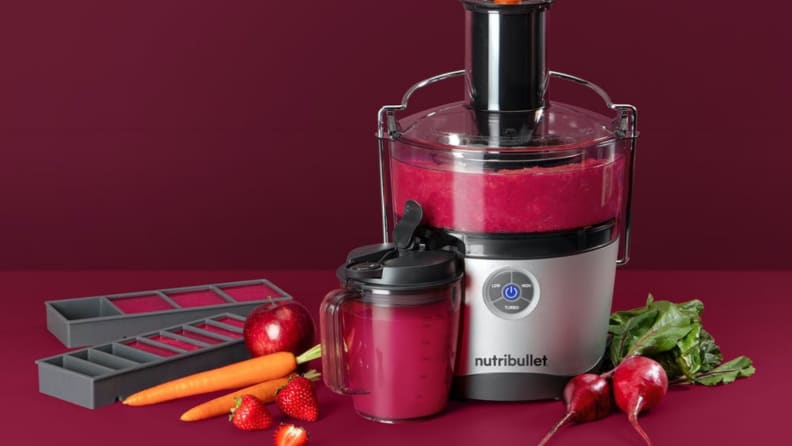
The juicer comes with many useful accessories including two freezer trays.
If you own a personal blender, you’re probably familiar with the NutriBullet brand. We like their Magic Bullet blender for its portability, powerful motor, and ease of use, so we decided to give their juicer a try.
This centrifugal juicer ($149.99) consists of a heavy motor base and a pulp basin with a large feed tube. It comes with a juice pitcher with froth separator, two glass to-go bottles, two freezer trays, a recipe guide, and a brush for cleaning the stainless steel sieve. There’s a cleverly designed no-drip spout with a valve that prevents residual liquids from dirtying your countertops.
There are three speeds: Low, High, and Turbo, which correlate to the type of ingredients used. For leafy greens, Low is sufficient; for hard ingredients like carrots and beets, High and Turbo speeds may deliver better and faster results.
The Juicer Pro comes with a one-year warranty with options for purchasing additional warranty coverage.
Juice yield is our top priority when it comes to the juicer testing and this NutriBullet is no exception. As we did with other juicers in our roundup, we made cups of juice from ingredients of various hardnesses, evaluated the texture of the juice, and weighed the liquids and solids after juicing.
What we like
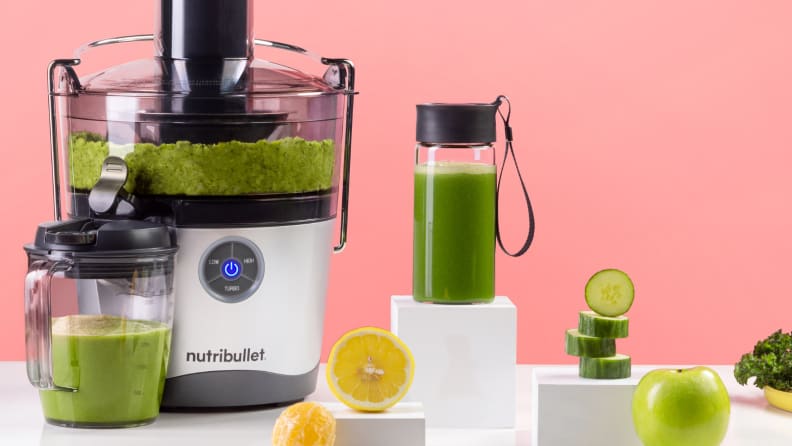
The NutriBullet Juicer Pro has a no-drip spout that'll keep your countertop neat and clean.
This juicer is designed with home cooks in mind. The assembly process takes very little effort and for a first-timer like me, I had no problem putting together the parts to start juicing. The pulp basin clicks into the motor base firmly and can be further secured by a guardrail that clicks onto the side. In testing, we noticed that the motor won’t turn on if the guardrail isn’t secured in place, which is a great safety feature for families with young children.
Juicing felt easy and quick. While the yields weren’t as impressive as the masticating models that we’ve tested, like our winner Omega, this juicer outperformed the other centrifugal models in the best juicers roundup.
Whether it was spinach, or kale and apple, or grapefruit, the cups of juice it made were free of pulp, and both smooth and delicious. The plunger is dual-sized, which is useful, as it allows you to push down both large and small ingredients with ease.
Compared to other juicers, this one is also easy to clean. You can easily lift up the pulp basin and clean the components either in the sink or in the dishwasher, as they’re dishwasher-safe. The included brush is also very useful for getting rid of the residual pulp that’s stuck on the sieve.
What we don’t like
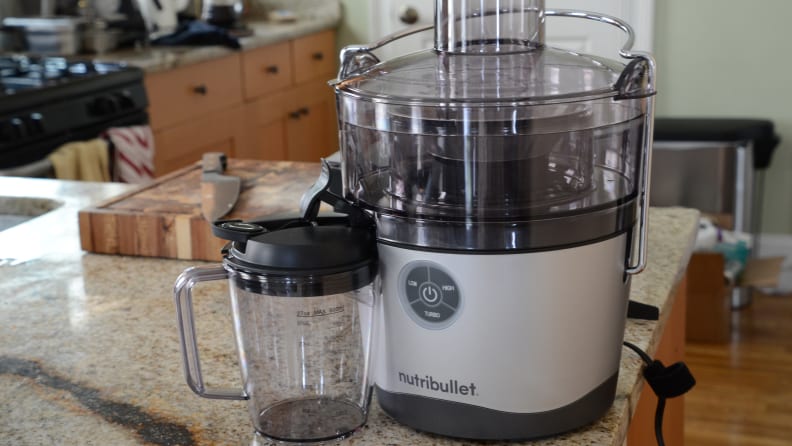
Make sure you have enough space for storage before making a purchase.
Though we aren’t expecting juicers to be quiet, this juicer is exceptionally loud when juicing carrots and beets. Fortunately, you won’t have to bear the noise for too long, as it does its job quickly.
Like many juicers, this NutriBullet is bulky. Before purchasing one for yourself, you may want to make sure you have enough cabinet storage space or that you’re willing to dedicate a permanent spot for a juicer on your countertop.
In terms of accessories, we aren’t big fans of the glass to-go bottles, as we struggled to screw their caps on tightly.
Should you buy it?
High-end juicers don’t come cheap, so this NutriBullet’s Juicer Pro is a much more affordable alternative. If you’re trying to get more vitamins and minerals into your diet or trying to entertain your family with fresh juice, then this juicer may be worth it.
In our testing, we’ve found that it does its job well, consistently yielding higher volumes of juice than our top centrifugal juicer in multiple tests. It’s loud, but you probably won’t be dealing with the noise for too long, as its powerful motor can get the work done within seconds, much faster than my Vitamix pro-style blender.
Still debating whether to purchase a blender or a juicer? Check out our reviews for the best blenders that money can buy.

